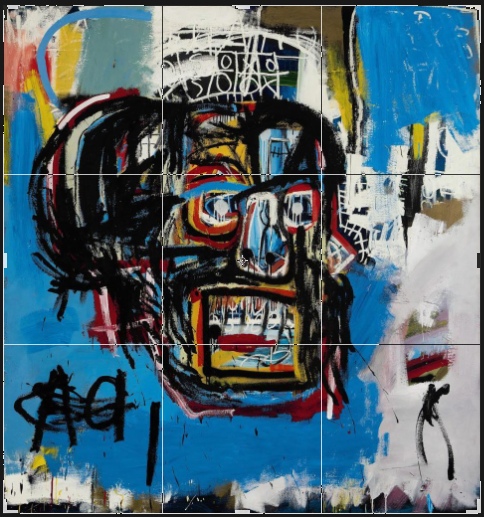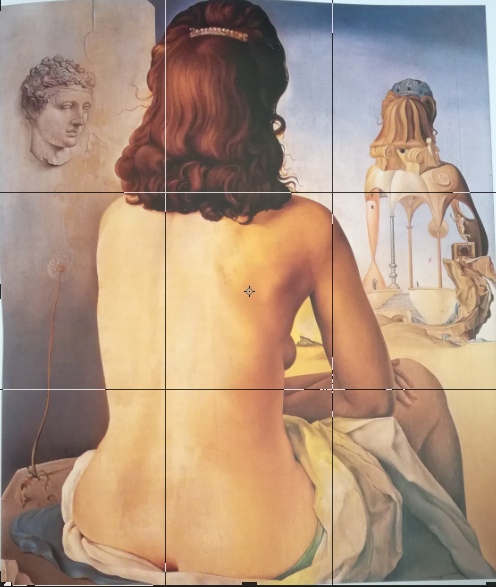
The golden ratio is a mathematical formula, the result of complex calculations made by ancient Greek scientists. The uniqueness and divine nature of the golden ratio are explained by the fact that its use brings an invisible, but subconsciously perceptible order to science, music, architecture, and even nature.
The golden ratio in art is the formula for perfection.
The great Leonardo da Vinci is perhaps the most famous admirer of the golden ratio in painting. The composition of many of his paintings is built precisely on the basis of the “Divine Proportion”.
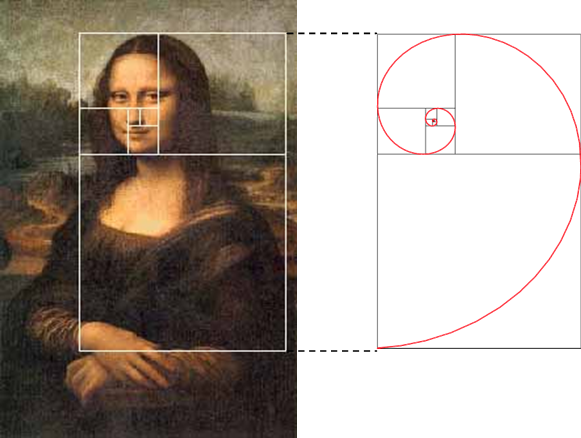
You may already know that it was Leonardo da Vinci who clearly demonstrated the connection between the golden ratio and body proportions. He did this in his ink drawing “Vitruvian Man”, which reflected the harmony and proportionality of body parts relative to each other.
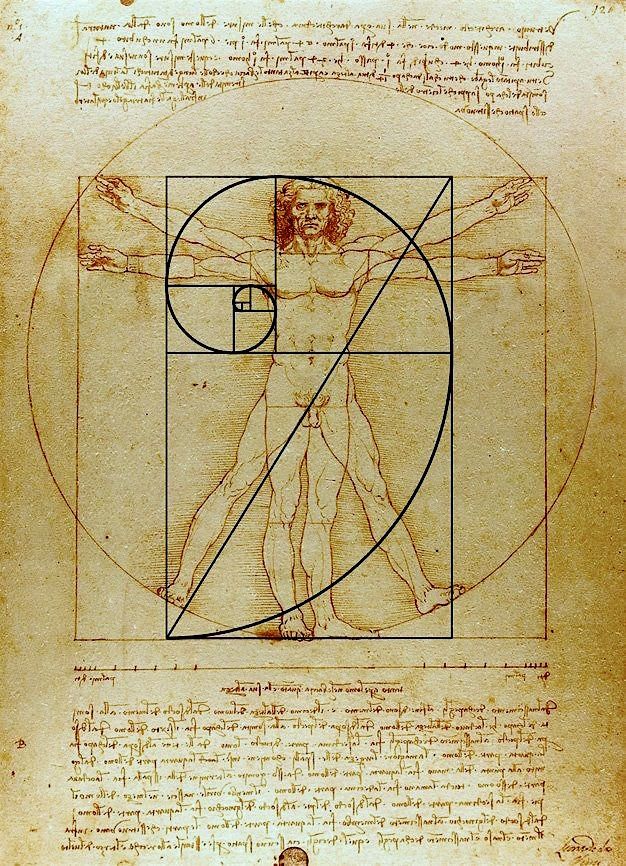
The works of Leonardo da Vinci are practically a textbook on the golden ratio in the paintings of the great masters. Let’s look at his Last Supper. Pay attention to the division of the picture along the horizon ceiling and according to the faces of the apostles. And here is the main figure, not only Jesus, who is in the middle but also Mary Magdalene and the Apostle Phillip.
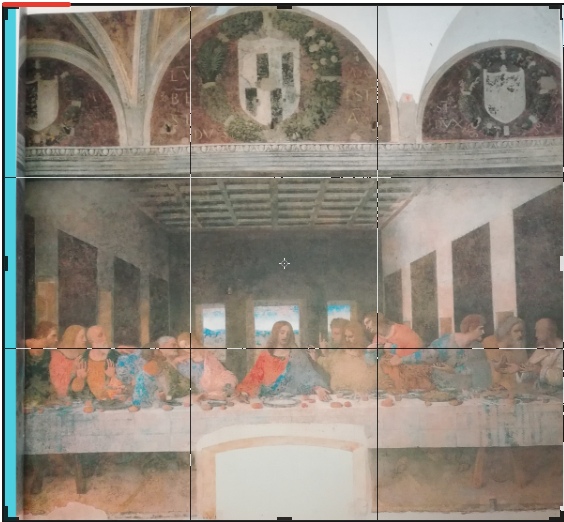
A contemporary of da Vinci and one of the most famous masters of the visual genre, Botticelli also used the principle of golden ratio in art. Famous paintings on religious themes owe much to the golden ratio for the majestic and peaceful impression they make. As examples, we would like to recall the “Sistine Madonna” by Raphael and the “Holy Family” by Michelangelo.
So how do you find the golden ratio?
We take a sheet and divide it into 3 equal parts vertically and horizontally. The grid comes out. At the intersection of these lines in the visual arts, something important is placed. It is believed that it is more pleasant for the eye to look at these “points”.
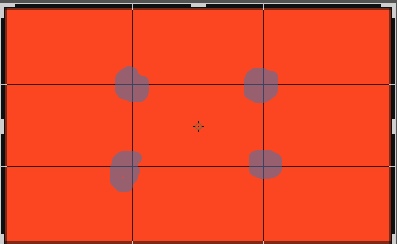
That is, artists, drawing their paintings, place significant objects on these lines and points. Let’s look at the paintings of different masters of different times, superimposing a grid of the golden section on them.
Let’s look at an example of the golden ratio in art in the painting “Bacchus” by the artist Caravaggio. Note that the head lies neatly in one of the rectangles. The bare part of the body is equal to one of the sides of the rectangle. And also his whole body is almost equal to 2 parts.
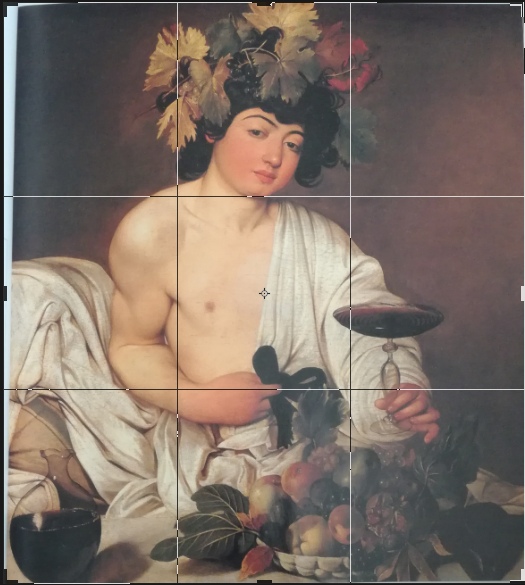
Let’s see what Dali did in his paintings. Here is his work “My Wife, Nude, Contemplating her own flesh becoming Stairs, Three Vertebrae of a Column, Sky and Architecture.”

Dali suggests that one of the weighty parts of the picture, worthy of falling under the golden ratio, is his wife’s pelvis. Dali was still that mischievous person).
But in the “Temptation of St. Anthony”, the main thing is the elephants, located on a horizontal line. And pay attention to Anthony’s eye, it seems to have accidentally fallen on the line we need. The gaze of the character becomes one of the key points, looking down at the elephant horses.
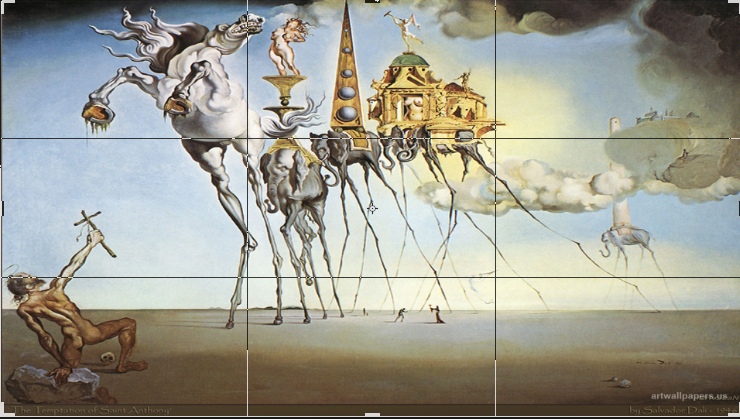
The principle of the golden ratio in art can be found not only in the paintings of the great masters of the past, such as Da Vinci, Rembrandt, or Renoir but also in the works of contemporary artists. It is enough to take a closer look at the famous painting by Jean Michel Basquiat.
